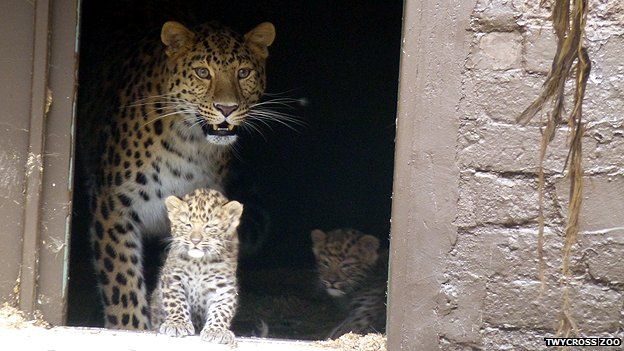Two rare Amur leopards born at Twycross Zoo in Leicestershire
- Published

A pair of Amur leopards, which are said to be the rarest big cats in the world, have been born in Leicestershire.
Twycross Zoo said its new cubs were born in June and could one day be reintroduced into the wild.
There are about 50 wild Amur leopards in China and south-eastern Russia but they are close to extinction because of poaching and illegal logging.
The zoo said it had only just announced the births of the cubs over fears they might not have survived.
A zoo spokesman said the cubs were unnamed as they had not yet had any human contact and staff did not even know their gender.
Dr Charlotte Macdonald, head of life sciences at Twycross, said: "We are hopeful that these UK-born babies will one day be part of wider conservation plans for the reintroduction of the species to the wild."
But she said any reintroduction would not take place for several years and only after negotiation with the Russian government.
Footage of the Amur leopards
The cubs' father Davidoff was the first Amur leopard born at Twycross Zoo.
Poaching, illegal logging, forest clearance and land development, disease and in-breeding within a small population, are all factors which have threatened the long-term survival of the species, the zoo said.
But there are thought to be 200 to 300 Amur leopards - a subspecies of the more numerous leopard - in captivity.
Dr John Lewis, veterinary advisor to the Amur leopard European captive breeding programme, said zoo breeding was "fundamental" to saving the animal.
"We don't know how many of the Amur leopards remaining in the wild are young or old, male or female," he said.
"So if the population is skewed towards too many males or too many older individuals, this can impact the species' chances of breeding successfully," he said.
The cubs are on display to the public from Wednesday.
- Published12 June 2014
- Published14 August 2013
- Published8 June 2012